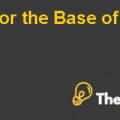
In response to the new laws governing liability and several food safety scares in the 1990s, European retailers were to create a universal standard of production on the basis of good agricultural practices (GAP) for fresh fruit and vegetables and the third-party certification system for monitoring compliance. By 2008, the GLOBALGAP standard was expanded to cover the coffee, tea, livestock and aquaculture. Over 90,000 producers in 87 countries have been certified. Looking ahead, the board and management of GLOBALGAP discussed a number of issues, including: GAP should include environmental and social aspects of food safety, What was the role GLOBALGAP outside of Europe, and as GLOBALGAP as a "hidden asset beyond ethical labels such as fair trade. "Hide
by David E. Bell, Mary Shelman Source: Harvard Business School 22 pages. Publication Date: 05 January 2009. Prod. #: 509004-PDF-ENG













